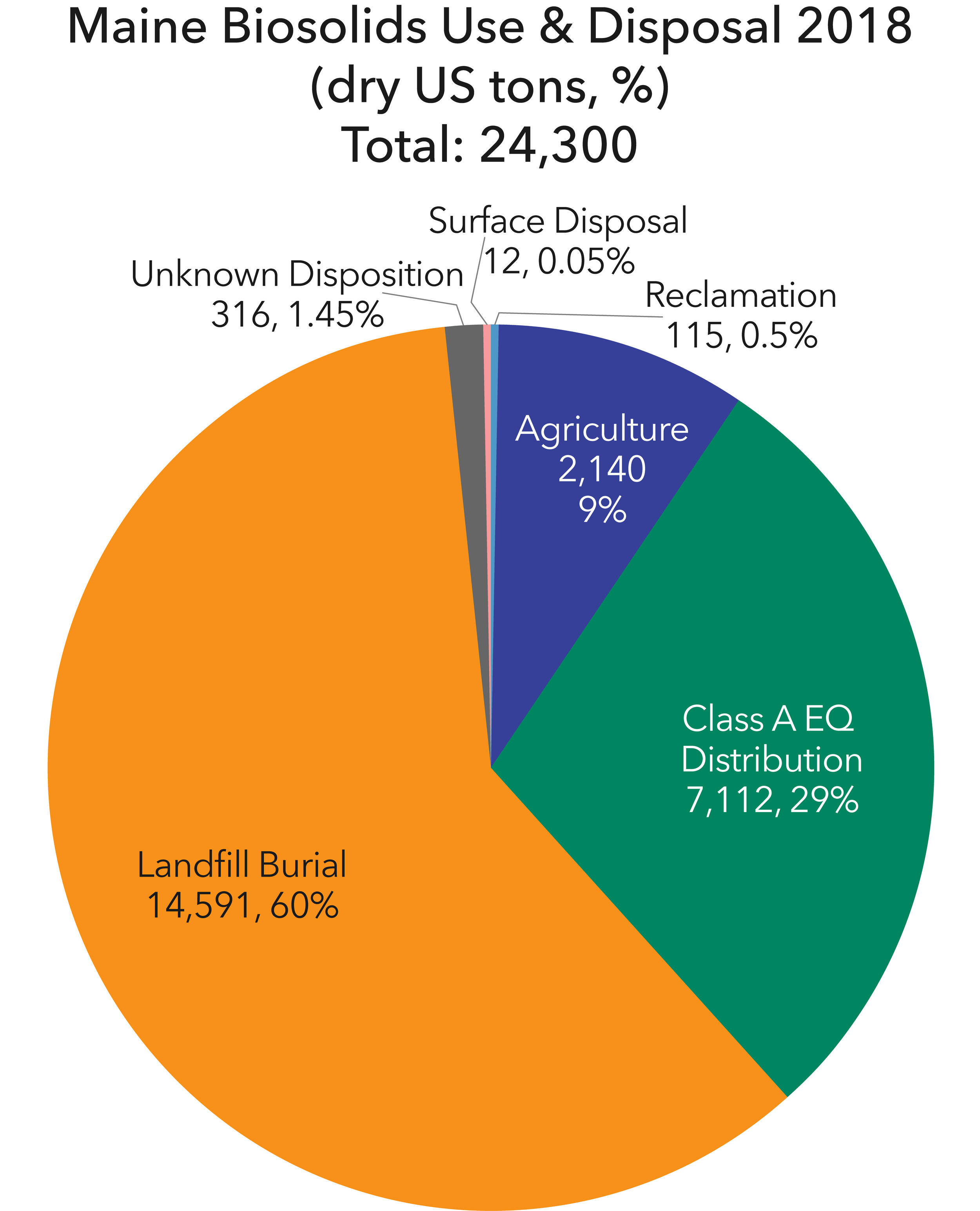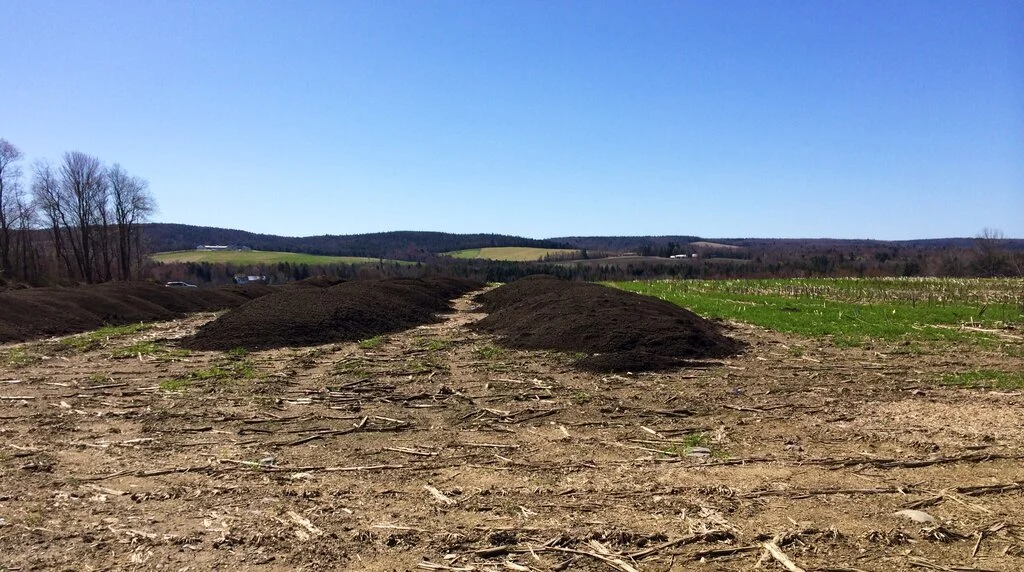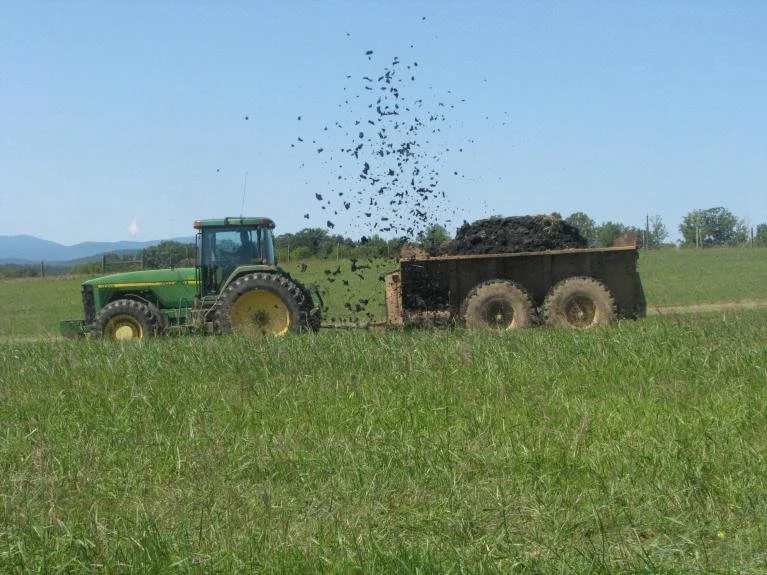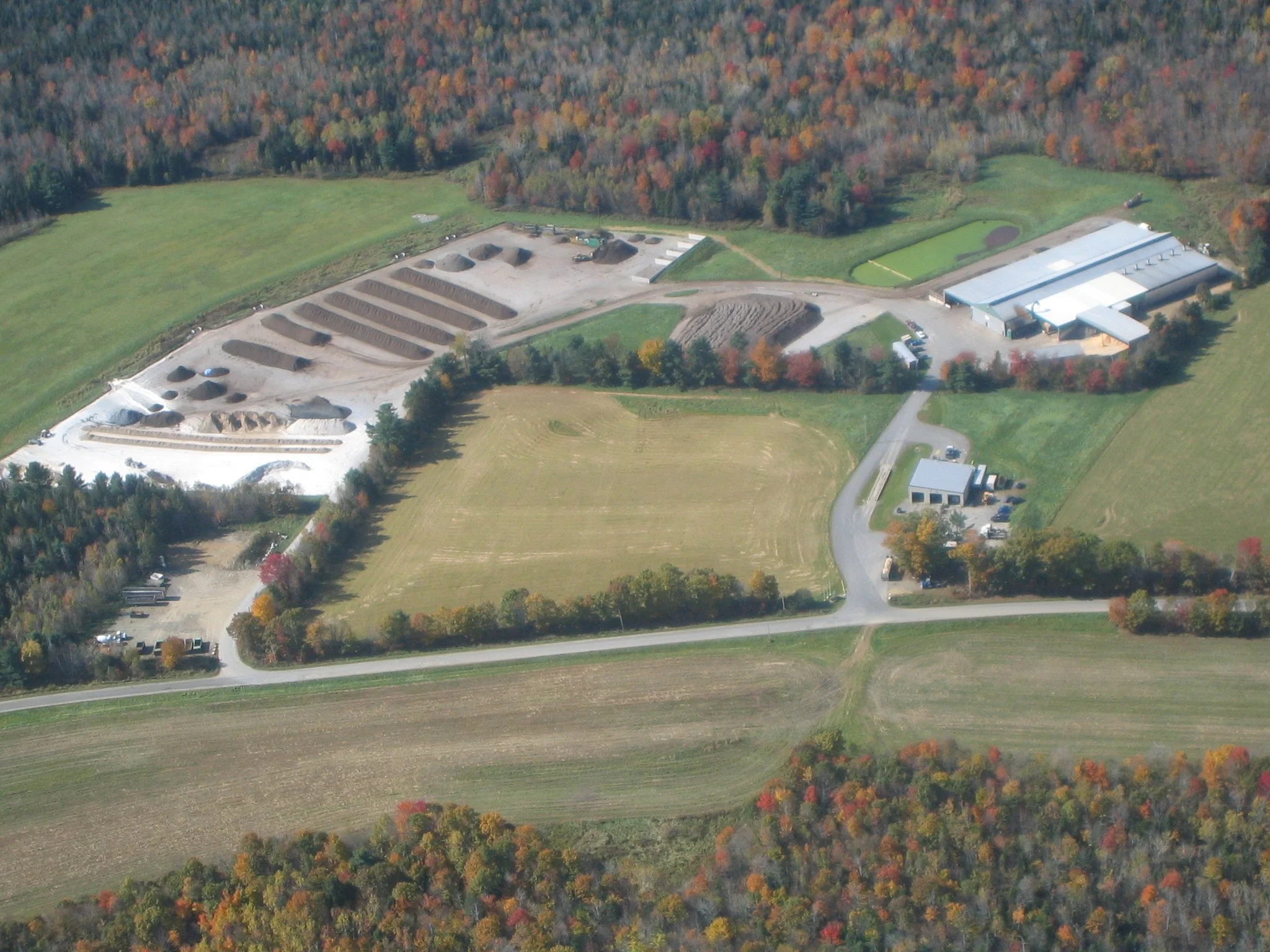State Data
Confidence in data for this state:
MODERATELY HIGH
2018 data unless noted.
Definitions
Terms used on this website and in data sets are defined & discussed here.
Biosolids compost pile and tour at the Sanford, ME WRRF and compost facility. Photo courtesy of NEBRA.
Anaerobic digestion and renewable energy from biogas, combined with years of biosolids recycling to soils, make the Lewiston-Auburn Water Pollution Control Authority (LAWPCA) an award-winning leader in sustainable biosolids management in Maine. Photo above courtesy of LAWPCA. Photo below courtesy of NEBRA.
Biosolids land application. Photo courtesy of NEBRA.
New England’s largest compost facility, processing biosolids, food wastes, and other organic residuals, Unity, ME, owned & operated by Casella Organics. Photo courtesy Casella Organics.
State Statistics Dashboard
State Summary
● Maine, by far the largest New England state, with plenty of agriculture, has long been the regional leader in percent of wastewater solids recycled to land – some years in the 1990s and 2000s exceeding 85% recycling. However, in recent years, more Maine solids have gone to landfills because of reduced availability of beneficial use outlets and increased regulatory restrictions. In 2018, about 40% of Maine’s municipal wastewater solids were applied to soils; the rest were disposed of in landfills.
● Much of the beneficial use of Maine biosolids has been driven by one or two private separate preparers – facilities that treat solids to Class A EQ standards, producing products that can be put to a variety of uses. Most notable – and the only one still operating in 2018 – is the Casella Organics Hawk Ridge Compost Facility in the central town of Unity, which has produced biosolids compost for decades, treating solids from ~40 Maine water resource recovery facilities (WRRFs), plus some from neighboring states. The compost has been in high demand, selling for up to $30 or more per cubic yard. It is used in agriculture, horticulture, landscaping, gardens, land reclamation projects, and for maintenance of sports fields and lawns. Several Maine WRRFs have their own composting operations, including Sanford, Scarborough, Lincoln, and Yarmouth.
● Class B land application was abundant in Maine in decades past, but has been diminishing since the late 2000s. In 2018, it was about 9% of all Maine wastewater solids, involving less than a dozen WRRFs, including Lewiston-Auburn (LAWPCA), Presque Isle, Mechanic Falls, Blue Hill, Grand Isle, Norridgewock, and Richmond. Class B biosolids are usually used at dairy farms for hay and feed corn crops.
● In the 2010s, two anaerobic digestion facilities began operations, producing Class B biosolids: one at LAWPCA, and one a stand-alone, private merchant facility – Village Green – located in Brunswick. Both process wastewater solids supplemented by food waste, fats, oils, and grease (FOG), and other liquid organic wastes, generating biogas used for renewable electricity.
● At least ~20 Maine WRRFs send solids to landfills, mostly to the large landfills at Norridgewock and Old Town; in 2018, much of the total tonnage of landfilled solids were from Portland and South Portland, whose treated solids went to landfill when beneficial use options were not available at the time. Some WRRF solids went to local landfills; for example, Brewer's solids went to the Hartland municipal landfill. Maine’s two large landfills also receive wastewater solids and other waste from sources outside of Maine.
● In March of 2019, Maine became the first state to impose very strict biosolids regulatory screening standards for PFAS – fluorinated compounds of emerging concern. The Maine Department of Environmental Protection (ME DEP) halted biosolids use until PFAS testing was done. Since then, resumed beneficial use of any biosolids product has only been allowed if biosolids do not exceed strict screening standards or could be shown to not impact soils above those screening standards. As of 2021, Class B land application has pretty much ended in Maine, while Class A EQ product use continues. However, discovery of PFAS contamination of soil, water, and farm products on a few Maine farms – thought to come from land application, decades ago, of a few industrial residuals and/or industrially-impacted municipal biosolids – has led to increased public outcry and the potential, as of 2022, for a ban on biosolids use imposed by the state Legislature.
● Septage management in Maine has been similar to biosolids management. In the past, some septage was land applied, and a large septage treatment and composting operation in central Maine was well regarded until it closed in or around 2018. Still, most septage was and is hauled to WRRFs. Detailed septage management data are not readily available.






